Aboriginal Studies 10
Section outline
-
-
Instructions:
Enter the grid password below: aboriginal10
Click the big green button.
Record your class introduction video.In your video:
1. Introduce yourself.
2. Tell me something you would like to share IE: hobby, pastime, a sport you enjoy.
3. Tell us why you chose this course and what are you curious to learn about?
4. Just a note that your video recording time is set for a maximum of 5 minutes. Have fun and thank you for sharing!
-
-
-
This video gives you instructions on how to video conference.
Make sure that you have a camera and a microphone on your laptop or desktop computer.Instructions:
1. Go to zoom.com
2. Create a new free account.
3. Download the software.
4. If you are using a Chromebook, download the chrome Zoom app.
5. I will send you a zoom meeting link through your Moodle message box located on the right-hand side of your course.
6. Copy this zoom meeting link and paste it into a new browser tab on your computer.
-
-
This section will outline:
-
-
-
-
-
-
-
- the course
- expectations
- how-to's
-
-
-
-
-
-
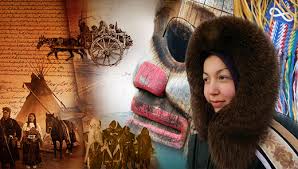
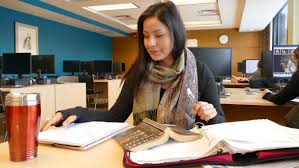
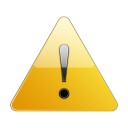 Important Note:
Important Note: - Because of the nature of this course and because much of your work will be research based, it is critical that you remember to cite your resources properly.
- Make sure that you attribute thoughts and ideas that are not your own to their original owners.
- Images and videos usually have 'Copyright' attached and will need to be cited, and in many cases, permission to use them must be granted. Be sure to read the copyright rules of the source and adhered to the rules.
- All images and resources in this course have been purchased, cited, taken from resources that allow for public use and/or permission has been obtained to use the resource for educational purposes.
-
Here are a few resources that may help you with your research projects. Be cautious with your internet searches. Not all sites are authentic and not all sites are up to date with their information. Please read the copyright information and request permission to use material from websites. Make sure that you cite any material taken from the internet or books. In order to build a database of credible resources, please add to the list by sending your instructor the link to your 'most amazing resource' and provide a sentence or two explaining the purpose of the website.
* Disclaimer: These links are by no means all the legitimate and valid sites available on the topic of Aboriginal peoples in Alberta, Canada, North America/South America or the world! Should you find a site that you feel should be included, please send the link to your instructor with a short synopsis of the purpose/function of the site. You will find more links to specific communities in Alberta below. You will also find relevant links in each of the lessons and/or assignments.
-
The links will take you to online magazines, newsletters, and Aboriginal community websites that may be valuable in your research, to supplement your assignments and for your personal interest.
-
Unfortunately, there is not an interactive map of the Metis communities in Alberta. The map that was provided is somewhat dated (2006) but has been included here to demonstrate the significant number of Metis communities that exist in Alberta.
-
Inuit live in 54 Inuit communities across the northern regions of Canada. Explore the interactive map to learn about their location, traditional name, population, and other statistics. Unfortunately, the interactive map is not working correctly so the link will take you to the database which provides a 'table-like' compilation of the data.
-
-

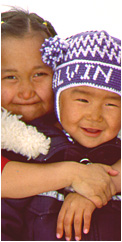
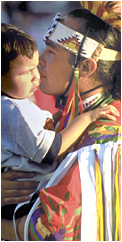
Aboriginal Studies 10 is a foundational course that provides a background understanding of Aboriginal Studies 20 and 30.
The goal of this course is to encourage students to make connections between the past, the present, and the future. By reviewing and exploring the perspectives, histories, and experiences of Aboriginal peoples in the past, students gain a greater understanding of Aboriginal people in contemporary society.
General Outcome: Students will demonstrate an understanding of the diverse cultural characteristics, origins, and migration and settlement patterns of Aboriginal peoples.Aboriginal Studies 10 (Senior High) (2002) ©Alberta Learning, Alberta, Canada
Related Concepts:perspective, theory, origin, migration, oral tradition, legends, stories, linguistic groups, cultural groups, traditional territories, cultural diversity, cultural environment, circular seasonal time frames, Métis, Métis settlements, mutual support, mainstream society, colonial governance.
-
General Outcome: Students will demonstrate an understanding of aspects of Aboriginal spirituality and worldviews.
Aboriginal Studies 10 (Senior High) (2002) ©Alberta Learning, Alberta, Canada
Related Concepts: values, spirituality, worldviews, harmony, unity, oral tradition, cycle of life, ceremonies, religions, animate, inanimate.
Definition: Worldview
The First Nations World View
People from different cultures have different ways of seeing, explaining and living within the world. They have different ideas about what things are most important, which behaviors are desirable or unacceptable, and how all parts of the world relate to each other. Together, these opinions and beliefs form a worldview, the perspective from which people perceive, understand and respond to the world around them.
People from the same culture tend to have similar worldviews. A culture’s worldview evolves from its history, which is the collective experience of the people within the culture over all the years of its existence. It also includes their beliefs about origin and spiritualism.
The traditional worldview of First Nations and Inuit peoples in Canada differs from the worldviews of people with a non-Aboriginal ancestry. You might compare a First Nations or Inuit worldview to a Euro-Canadian worldview by drawing a circle and a line. The circular First Nations worldview focuses on connections between all things, including the visible physical world and the invisible spiritual world. It sees time as always a cycle of renewal that links past and present and future. In contrast, a linear Euro-Canadian worldview lays out separations between elements of existence (spiritual and material, life and death, animal and human, living and non-living) and sees time as a progression from point to point.(Aboriginal Perspectives 2004, 66-67)
*It is important to remember that this section provides a 'snapshot' of the concept of worldview.
**Caution: In your research on worldviews, it will be imperative that you understand that worldviews are not absolutes. You will read about 'Western' vs 'Aboriginal' worldviews and authors will speak as if Aboriginal People perceive and relate to the world in one specific way and that the Western Worldview perceives and relates to the world in another specific way. This is a very broad generalization and one that would make an interesting debate! There are as many different worldviews as there are people and cultures.
-
General Outcome: Students will demonstrate an understanding of the political and economic organization of Aboriginal Peoples.
Aboriginal Studies 10 (Senior High) (2002) ©Alberta Learning, Alberta, Canada
Related Concepts: adaptation, interdependence, economy, economic partnership, entrepreneurship, community initiatives, alliances.-
As has been stated, it is important to know the past to understand the present and to plan for the future. We have examined the cultural diversity of the First Nations and Inuit people before the arrival of the Europeans determining that these societies had developed rich social structures influenced by such factors as geographical forces, spiritual beliefs, availability of resources, and climate. Our understanding of the social, political, economic and cultural structure is based on science, legends, tales, spiritual stories and written observations by the very early explorers and traders. Click on the Pre-European Political and economic Organizations of the First Nations and Inuit People to begin your lesson.
-
This book will provide additional information on the historical Political & Economic Organization of First Nations and Inuit.
-
With the coming of the Europeans, social, political, economic and cultural structures were disrupted and, in many cases, destroyed as the two cultures influenced each other. We will examine the interaction of the two cultures, European and Aboriginal, and we will try to evaluate some of the repercussions of this interaction on both cultures. From a historical perspective, we will explore some of the current issues being addressed by Aboriginal political and economic organizations. The final aspect of this section will be to research some of the Aboriginal people who have successfully entered into the world of business to improve their quality of life while keeping a balance with traditional practice. Click on the 'Current Issues' lesson icon to begin.
*Note: A more in-depth study of the current successes and challenges of the Aboriginal peoples is studied in Aboriginal Studies 20 and 30.
-
-
General Outcome: Students will demonstrate an understanding of Aboriginal Art Forms, oral tradition, and literature.
Aboriginal Studies 10 (Senior High) (2002) ©Alberta Learning, Alberta, Canada
Related Concepts: cultural transmission, values, beliefs, symbolism, analogy, diversity, cultural expression, holistic, integration, interpersonal relationships.
Our Past, Present and Future - An Endnote
-
We looked at the cultural diversity of the First Peoples before the Europeans arrived in North America and discovered rich, diverse, and often complex cultures. They passed these cultures on to each generation through their stories, ceremonies, governmental structures, art forms, music, and traditions. We explored how the intrusion of another culture disrupted the fluidity of cultural transmission. We have examined how culture provides a sense of place, value, and identity. In this unit, we will explore the reclamation, restoration, and preservation of cultures that are on the brink of extinction and will ask the question, "How do Aboriginal people retain their culture and live in a country that has been called a 'mosaic'?" Click on the 'Preservation of Culture and Identity' to begin.